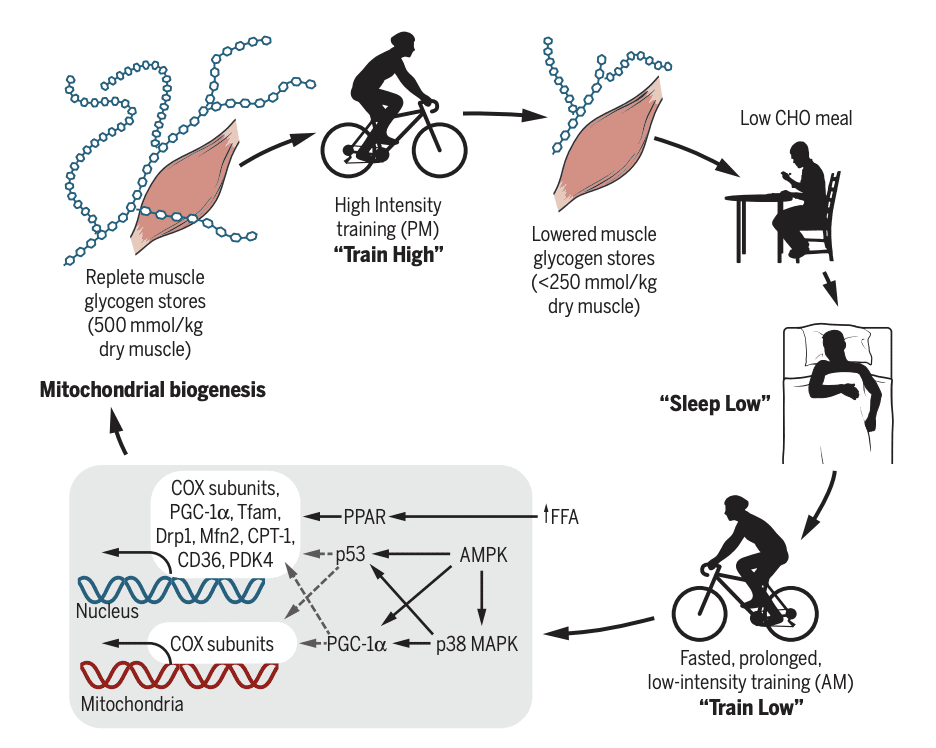Fasted workouts part of a periodized nutritional approach
"Now the move is to try and integrate both the high-quality training and the low carb availability adaptation training, so you get the best of both worlds."

Over the past few years, fasted workouts have become all the talk in health media. Look through any health and wellness magazine, online publication, blog source or claimed health YouTube channel, and chances are you’ll see fasted workout, intermittent fasting or training low.
While all the attention may suggest this is a new theory, fasted workouts are not new.

What are ‘fasted workouts’?
In layman terms, fasted workouts mean training after not eating for several hours. So, a common practice is to do a session in the morning without eating. The last meal you ate was dinner, approximately 10 hours prior to your workout. So, your body will be depleted of carbohydrates, therefore relying on stored fat to provide energy. In this state, you are more likely to burn fat for energy, instead of carbs.

Why do fasted workouts?
For those in endurance sports, for example, long-distance triathlons (half-Ironman and Ironman), performing fasted workouts helps train your body to rely on other fuel sources for energy.
In a recent scientific review published in Science, Louise Burke head of sports nutrition at Australia’s Institute and John Hawley, director of The Mary MacKillop Institute for Health Research, explored the nutritional approaches of endurance athletes. An interesting theory used by endurance athletes is periodized nutrition, balancing carbohydrates, fats and protein. Burke and Hawley state the following in their review:
Commencing endurance training with lowered muscle glycogen (stored carbs) stores results in greater transcriptional activation of enzymes involved in carbohydrate and fat oxidation, as well as greater mitochondrial (powerhouse of the cell) biogenesis, than undertaking exercise with a normal or elevated glycogen content.
This means that performing fasted workouts does increase the body’s ability to use different fuel sources for energy and increases the production of mitochondria, the organelle in a cell that provides your cells and muscle tissues with energy.

Periodized nutrition
This approach appears to be most beneficial when doing low-intensity endurance sessions. But when performing high-intensity intervals, a pre-exercise meal of carbohydrates is the most accepted practice. Therefore, Burke and Hawley suggest a novel approach of training ‘high’ and sleeping ‘low.’ The approach may look something like this:

We formulated a novel approach in which we can undertake high-quality, high-intensity training [with a high carbohydrate intake] and then prolong the duration of low CHO availability during recovery and subsequent aerobic exercise, thereby potentially extending the time course of transcriptional activation of metabolic genes and their target proteins. We have termed this practice “train high, sleep low.”
What about weight loss?
Another reason for performing fasted workouts, along with a well-balanced structured diet and training program, is to lose body fat (a benefit of this may be weight loss). However, the evidence in this area is not as clear and the practice isn’t foolproof.
Periodization: combine the nutritional needs with training demands
In an interview with Sarah Berry, a writer for The Sydney Morning Herald, Burke is quoted as saying, “Now the move is to try and integrate both the high-quality training and the low carb availability adaptation training, so you get the best of both worlds.” Instead of focusing on one diet, training approach or phenomenon, there is value in adapting your diet to the nutritional needs your training demands.

